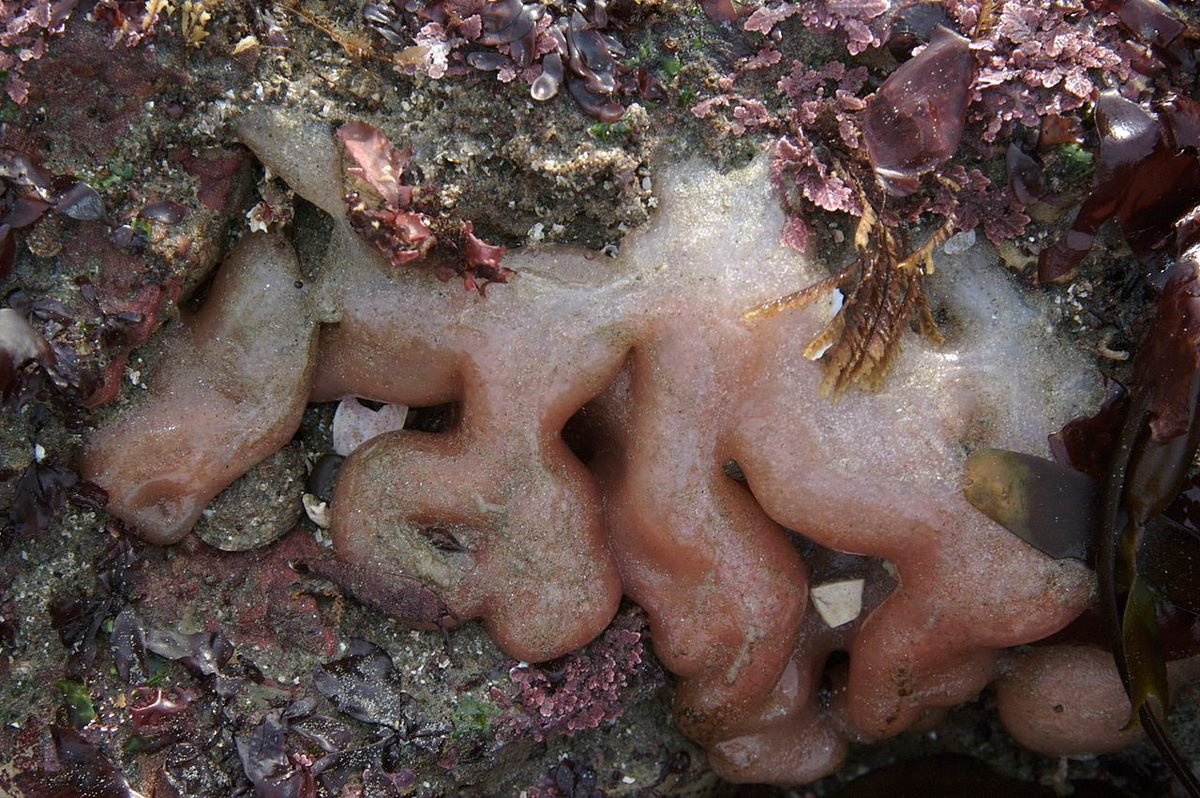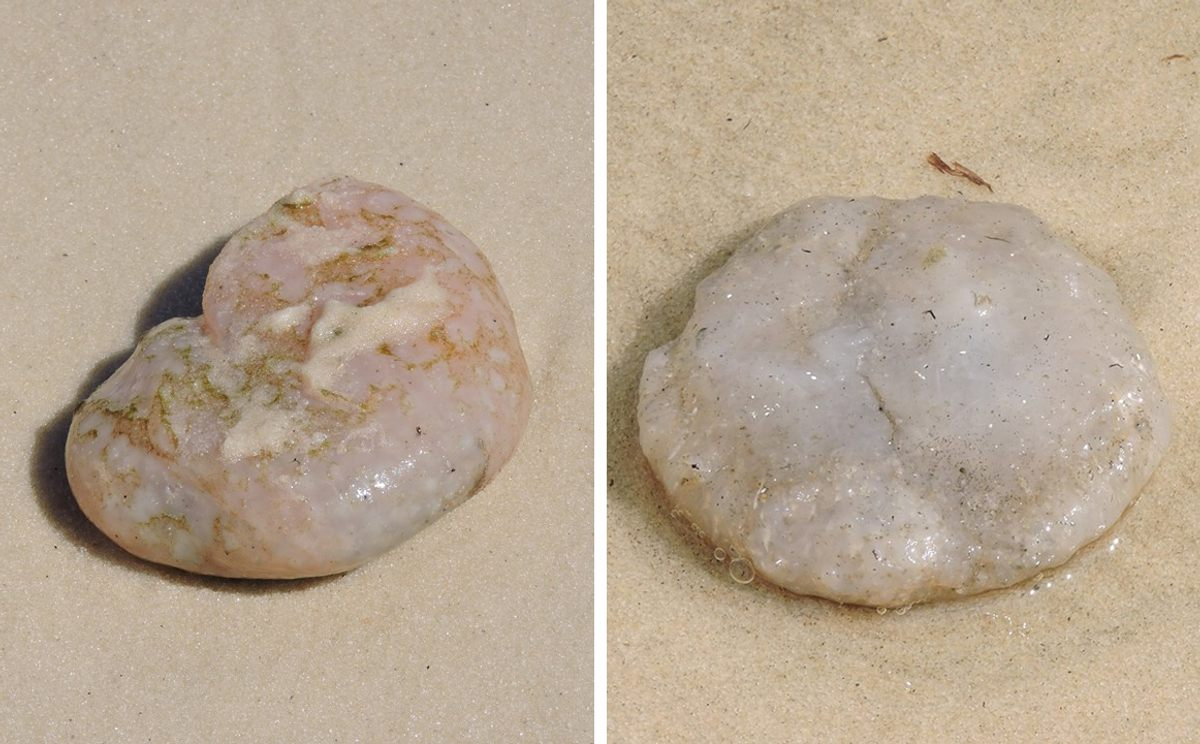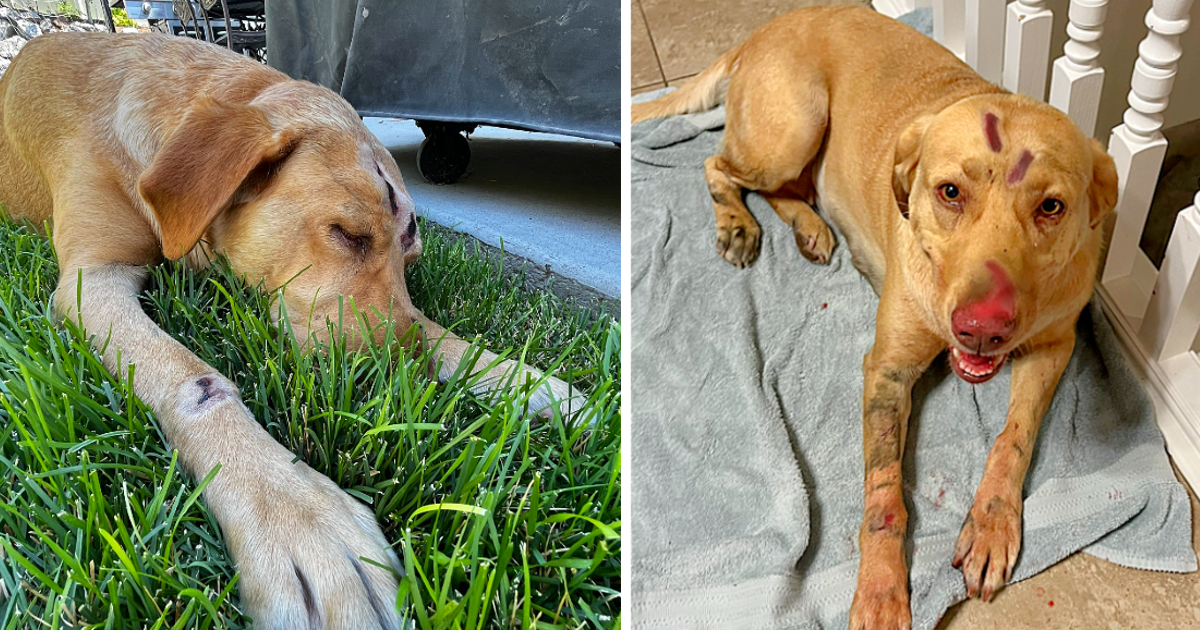Sea pig. Sounds like something you’d find in a pirate’s pantry or a mermaid’s refrigerator. But believe it or not, sea pig is real, and it’s not something you’d want to eat. Well, most likely.

This sea pig (Aplidium stellatum) washed ashore near Destin, Florida. Image credit: Rebekah D. Wallace
While visiting Bald Point State Park over Thanksgiving weekend in 2014, Karen Parker, who works as a coordinator for the Florida Fish and Wildlife Conservation Commission (FWC), continually stumbled. with peculiar things on the beach. Hundreds of little purple, pimply things that looked like miniature earlobes or kidneys were scattered everywhere.
Additionally, there were other items he could not identify, such as a blood clot-like object partially covered in sand, a flattened breast implant-like item, and a fragment of what looked like rubber that developed lime green fur.

Blood clot? A piece of pork liver? Aplidium californicum resembles both. Image credit: Gretchen Lambert
He grabbed a stick and poked at the foreign objects before taking photographs to send to his colleagues. “I was on the beach texting people, saying, ‘What the hell is this?’” Parker told Atlas Obscura.
Despite not receiving an immediate response, he discovered the answer to his query at the Gulf Marine Specimen Laboratory Aquarium located nearby. Photographs displayed near the touch tank confirmed that the small purple lobes were sea pansies, a type of coral, and the other peculiar objects were known as “sea pig.”

“Sea Pork” refers to some species of fleshy-looking tunicates, including Amaroucium californicum. Image credit: Jerry Kirkhart
The sea hog is a type of tunicate, also known as the sea squirt. These creatures are found in oceans around the world and come in a variety of colors and shapes. Some tunicates are tube-shaped, while others look like blobs or clumpy sacs.
But the tunicates known as Aplidium californicum, Aplidium solidum and Aplidium stellatum are especially interesting because of their resemblance to certain types of meat. That’s right, the sea pig looks a lot like the real pig, at least in terms of color and texture.

Pig? Or maybe chicken? Aplidium stellatum definitely looks like it. Image credit: Andrea Westmoreland
Now, I know what you’re thinking: “Sea pig? “That sounds disgusting!” And you are not wrong. These tunicates may look a little like bacon or ham, but they definitely don’t taste like that.
That said, some tunicate relatives of the sea pig are considered a delicacy in South Korea, where they are known as ‘meongge’. There, they are specifically grown, peeled and consumed fresh and raw and reportedly have a chewy texture (wow, what a surprise!). However, if you come across sea pork on the shore, it is highly recommended that you avoid consuming it.

Potatoes? Truffles? strawberries? Aplidium solidum also looks like food. Image credit: Alex Heyman / Alex Bairstow
Regardless of its flavor, sea pig is actually a very important part of the ocean ecosystem. They help filter water, removing toxins and harmful contaminants, and have done so for millions of years.
They and other tunicates exhibit a wide range of shapes (such as barrels, bottles, and balls), textures (from brains to chopped putty), and colors ranging from bologna pink to bloody liver purple, or even the creamy beige of roast turkey. 
Breast implants? No, sea pig. Image credit: Karen Parker/Florida Fish and Wildlife Conservation Commission
In the case of most tunicates, the color you are seeing is actually a slimy outfit, a slimy “robe” that is “worn” by a colony of small creatures called zooids. Although some tunicates are solitary and others float freely in open water, most of these organisms join forces and anchor themselves to the seafloor, usually no higher than 660 feet (200 meters), in their protective sac. As babies, they locate each other, group together, and live their lives feeding within their sticky housing cooperative. Those who wash up on beaches are often torn from their homes during storms.

In this image, you can clearly see the individual organisms called zooids that make up the sea pig (Aplidium stellatum). Image credit: James St. John
The sea pig has confounded beachgoers for generations, and for more than a century, scientists and others have strived to dispel misunderstandings about this unusual sea creature. Given their appearance, it’s no wonder they provoke morbid thoughts: When dead, they resemble bloated chops or waterlogged livers, raising concerns that waves could wash gruesome body parts ashore. Observers have even often confused them with tar balls originating from an offshore oil spill.
But whether you find them fascinating or disgusting, there is no denying that these creatures are a unique and important part of the ocean’s biodiversity. And we should thank them for keeping the water clean.





